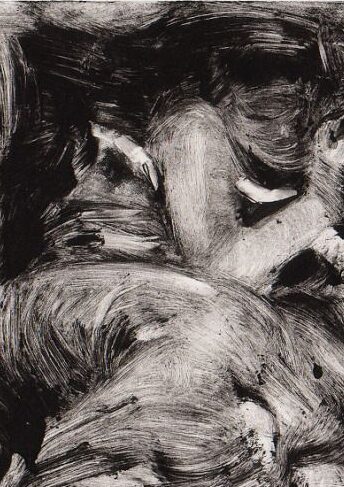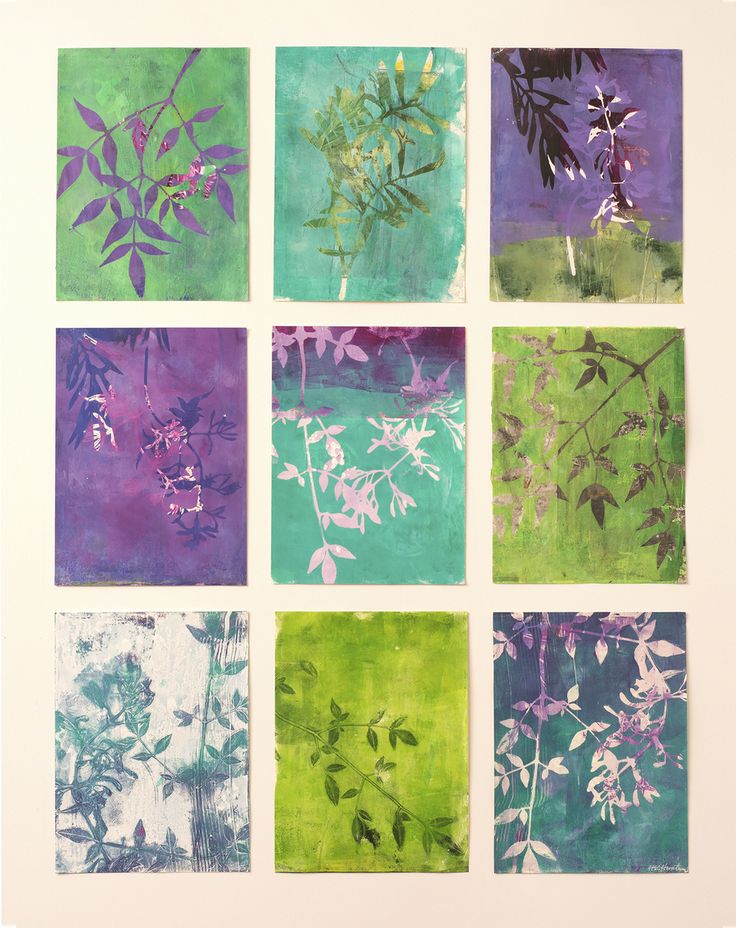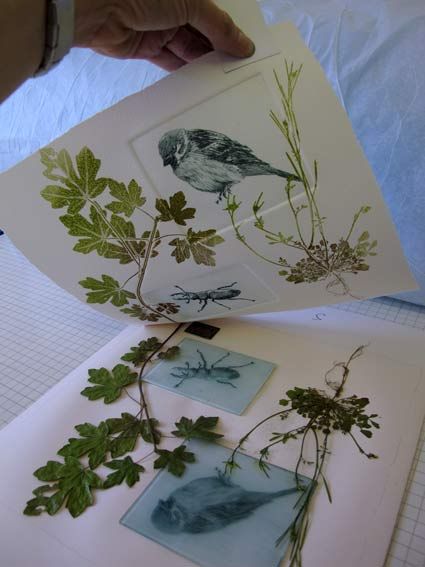Monoprint is a printmaking technique where an image is created on a surface, typically a plate, and then transferred onto paper or another substrate. Each monotype print is unique because it produces one-of-a-kind, unlike other printmaking methods where multiple identical copies can be made.
In Monoprinting, the image is often created by applying ink or paint onto the plate and then manipulating it using various tools such as brushes, rollers, or even fingers. The plate can be made of various materials like glass, metal, or Plexiglass. Once the desired image is formed on the plate, a piece of paper is placed on top and pressure is applied, either by hand or using a printing press, to transfer the image onto the paper.
Because of the nature of monotype, artists can experiment with different techniques and variations for each print, making it a versatile and expressive medium for artistic expression.

History of Monoprinting
Monotype, a versatile and expressive technique in the realm of printmaking, has a rich history that spans centuries. Unlike other printmaking methods that produce multiple copies of the same image, the technique offers artists the freedom to create one-of-a-kind prints, each with its own unique characteristics.
The roots of this technique can be traced back to the 17th century, when it emerged as a variation of traditional printmaking techniques such as woodcut and etching. Early practitioners experimented with different methods of transferring ink onto a surface to create singular impressions. However, it wasn’t until the 19th century that the printing process began to gain recognition as a distinct and valued artistic practice.
One notable figure in the history of monotype prints is the French artist Edgar Degas. In the late 19th century, Degas explored the technique as a means of capturing the spontaneity and fluidity of his subjects, particularly dancers and bathers. His innovative approach to the medium contributed to its growing popularity among artists of the time.
Monoprint Artists
Throughout the 20th century, it continued to evolve as monoprint artists pushed the boundaries of the medium. Experimentation with new materials, techniques, and tools led to a diverse range of styles and approaches to monotypes. Monoprint artists such as Pablo Picasso, Henri Matisse monotype Printmaking, and Robert Rauschenberg embraced the process as a way to explore texture, color, and form in their work.
The advent of modern printing technologies further expanded the possibilities of this technique, allowing artists to combine traditional methods with digital processes. Today, monoprinting remains a dynamic and vibrant form of artistic expression, embraced by artists around the world for its versatility and spontaneity. In conclusion, the history of monotype is a testament to the enduring appeal of this unique printmaking technique. From its humble beginnings to its current status as a respected artistic practice, it continues to captivate and inspire artists with its limitless potential for creativity and experimentation.
How to Create Monoprint
Here’s a brief step-by-step explanation of Monotype printing:
Preparing the Plate
The first step in the process is preparing the printing plate. This plate can be made of various materials such as Plexiglas, metal, or even glass. The surface of the plate is cleaned and prepared for the application of ink or paint.
Applying Ink or Paint
Once the plate is ready, ink or paint is applied to the surface. Artists can use brushes, rollers, sponges, or other tools to apply the ink in various patterns and textures. This step allows for creativity and experimentation, as artists can create unique compositions directly on the plate.
Manipulating the Ink
After the ink or paint is applied, artists can manipulate it using different techniques. They may use brushes, palette knives, fingers, or other tools to blend colors, create textures, or remote areas of ink. This manipulation adds depth and complexity to the final print.
Transferring the Image
Once the desired image is created on the plate, a piece of paper is carefully placed on top of the inked surface. Pressure is then applied to the back of the paper, either by hand or using a printing press, to transfer the image from the plate onto the paper.
Revealing the final Monoprint
After applying pressure, the paper is carefully lifted from the plate to reveal the transferred image. Each print produced in this way is unique, as the ink on the plate is not fully transferred in subsequent prints. Artists may choose to make additional prints (known as “ghost prints”) by repeating the process with the remaining ink on the plate.
Finishing Touches
Once the monotype print is complete, artists may choose to make additional adjustments or additions by hand. This could involve adding details with paint or other media, or embellishing the print in other ways to enhance its visual appeal.
The overall process of this technique offers artists a flexible and dynamic way to create original works of art, with endless possibilities for experimentation and creative expression.

Monotype printing Techniques
Monotype offers a wide range of techniques for artists to explore, allowing for endless creativity and experimentation.

Direct Painting
In this technique, the artist directly applies ink or paint onto the printing plate using brushes, rollers, or other tools. This method allows for precise control over the placement and intensity of colors, resulting in vibrant and expressive prints.
Stencilling
Stencilling involves placing stencils or masks onto the printing plate before applying ink or paint. When the stencil is removed, the uncovered areas of the plate are exposed, creating crisp, defined shapes and patterns in the final print.
Collage
Collage elements, such as paper, fabric, or other materials, can be incorporated into monoprints to add texture and depth. These materials are adhered to the printing plate before transferring the image onto paper, resulting in mixed-media prints with rich visual interest.
Trace Monotype
In this technique, the artist places a piece of paper on top of an inked surface and draws or presses into the paper to create an image. The pressure applied by the artist transfers the ink from the plate onto the paper, resulting in a unique, hand-drawn print.
Texture Printing
Texture printing involves adding textures to the printing plate before applying ink or paint. This can be done by pressing objects such as leaves, fabric, or textured materials onto the plate, creating interesting patterns and effects in the final print.
There are many techniques that artists can explore in monotype art. By combining different methods and materials, artists can create truly unique and expressive works of art that showcase the versatility and spontaneity of this dynamic printmaking process.